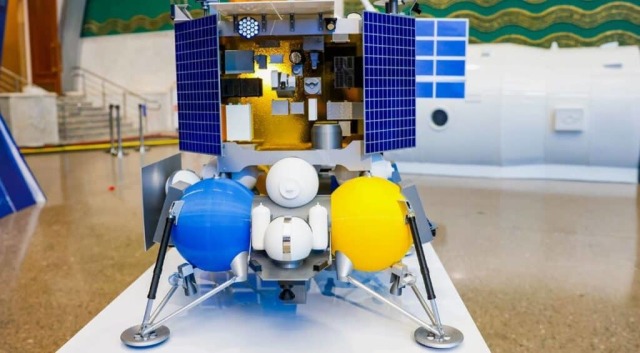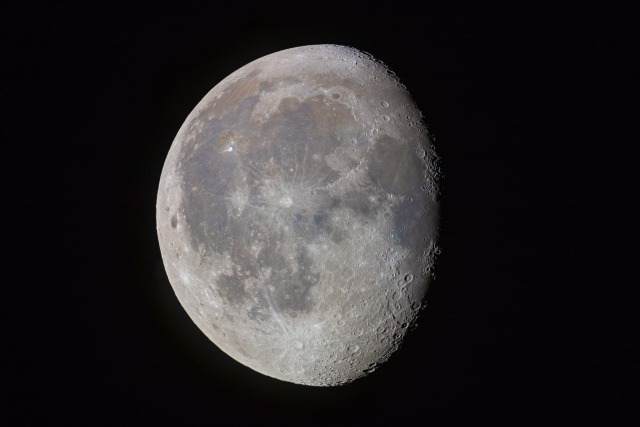Lev Zeleny, Scientific director of the Space Research Institute of the Russian Academy of Sciences and the first stage of the Russian lunar program, told what lessons were learned from the failed Luna-25 mission and how Russia is going to conquer the Earth's natural satellite in the coming years.
Lev Zeleny, a Soviet and Russian physicist, academician of the Russian Academy of Sciences and its former vice president, scientific director of the Space Research Institute, said in an interview with Rossiyskaya Gazeta that today the Russian lunar program is at the stage of refinement, adjustments are being made to it after the death of the Luna-25 interplanetary automatic station.
"I would like to emphasize that Russia was the first, back in 2010, to decide that at a new stage of research it would study not the equatorial Moon, which we already know something about thanks to Soviet spacecraft and American astronauts, but the polar moon, which no one has ever been to before. No one thought about it then. By calling our new project Luna-25, we wanted to show that we are "standing on the shoulders" of the giants of the Soviet era and are numbering from the last Luna-24 spacecraft, which was launched in 1976," the scientist noted.
Speaking about the success of the Indian Chandrayan-3 mission, Zeleny recalled that Russia managed to get ahead of its colleagues by a day (Luna-25 turned out to be 50 kilometers closer to the Earth satellite than the Indian device that initially launched earlier), nevertheless, the main goal — a soft landing — could not be achieved. The official reason for the crash of Luna-25 was that the stations gave too strong a braking impulse to switch from a circular to an elliptical, pre-landing circumlunar orbit. As a result, instead of 84 seconds, the engine worked for 127 seconds, the braking turned out to be too strong, and Luna-25 crashed into the surface of the Earth's satellite.

Academician Lev Zeleny
Image source: RIA Novosti
Nevertheless, according to Zeleny, all the mistakes were taken into account. Now the next step is the launch of the Luna—26 orbiter in 2027 and the landing of Luna-27 in 2028.
"Luna-26 is an orbiter with a wide range of tasks. First of all, a more accurate mapping of the Moon, a more targeted choice of a suitable location. Luna-26 will conduct experiments to study the magnetic and gravitational anomalies of the Moon and the circumlunar space. And, in principle, it will become a prototype of the future orbital lunar system," the academician said.
As part of the Luna-27 mission, they plan to launch not one device, but two, with a difference of six months — they will duplicate, that is, completely repeat each other. But the moon landing is planned in different regions of the satellite: at the south and north poles (to compare them) or at the south pole and the opposite side of the Moon. The landing site can be selected with an accuracy of up to kilometers, Zeleny stressed.
"Luna-27 will have a more reliable and proven landing system. The control system of the device will be better worked out. There will be more scientific equipment. The spacecraft will have to study the regolith, the heat flow at the landing site, seismicity and the exosphere — the dust shell of the Moon. The power supply is from solar panels, and during a moonlit night — from a radioisotope source. The station is designed for a year of operation," the scientist said.

The layout of the Luna-27 station
Image source: TASS
The next stage of the Russian lunar exploration program is a short—lived mission of the Luna-28 interplanetary station after 2027, which should bring to Earth (in a frozen state) soil samples from the polar region of a natural satellite. Then they are going to launch the Luna-29 orbiter, the Luna-30 lander with a lunar rover (working name "robot geologist") and Luna-31, a reusable landing platform. However, this is already in the longer term, Zeleny warned.
"I can say one thing: plans are being discussed, work is underway. <...> This is not just about individual missions, but about creating a full-fledged high-tech infrastructure for the development of our natural satellite. In the future, I hope, an international lunar base will be built. And the lunar observatory, an astrophysical station, will become part of it. When permanent bases appear on the Moon, it is possible to build a spaceport there for launching on Mars and other planets," he concluded.

